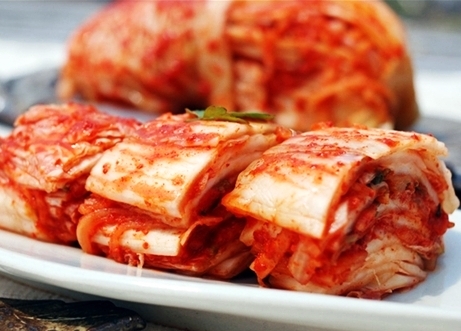
How to Ripen Kimchi
Everyone has a different preference as to when Kimchi(김치) tastes the best – some love eating freshly made, raw kimchi (kind of tastes like a salad); some love eating it when it is just perfectly ripe and then there are those who love sour kimchi (신김치 shin kimchi) which has basically over fermented and obviously tastes quite sour. But one thing is for sure – no one likes the stage when it is in the in-between stages of being raw and ripe. Kimchi really does not taste good at all when it is in the process of getting ripe – I had an aunt who used to call this the time when kimchi has gone CRAZY! And you certainly don’t want to eat the kimchi when it’s crazy! 🙂 So here’s how to ripen Kimchi and avoid CRAZY kimchi.
Since most of us now buy kimchi from the store, let me first write about the best way to eat a store bought kimchi. Too often, I hear people say that the kimchi served at our house tastes great, but when they try the same brand themselves, they think it doesn’t taste nearly as good. I realized it was because they don’t take the time to ripen it properly and then also forget to serve it cold (right out of the fridge). I found that most kimchi (even the poorly made ones) will taste quite palatable when they have had time to ripen properly.
Now, the hard part about buying kimchi from a store is that it is hard to tell at what stage of the fermentation process they are in. One clue is the appearance of the vegetables. They will look more shriveled up if they are further along in the fermentation process. And the chances are that it will also have lost a bit of the juice because the content will start to bubble and balloon up when it ferments which ends up usually overflowing out of the jar. This is actually too bad because kimchi should always be immersed in its own juices for it to taste the best.
The best way is to buy the freshest kimchi possible and bring it home and ripen it from the beginning. But this is usually not possible…So far, I have found the best tasting kimchi that you can buy are actually the ones that are directly imported from Korea (종가집Jongajip is my favorite). It is expensive but worth it in my opinion as long as it hasn’t traveled too far or stayed on the shelf too long at your store. Other than that, the next best thing is to try to buy kimchi that is made locally if it’s available (less chance of it over ripening) and when you bring it home, open it, smell it or better yet, taste it. If your store has a fast turnaround, it is probably in the “crazy” stage.
If it’s already fully ripe, put it in the fridge in the coldest possible setting. If it’s not yet fully ripened and you can wait, let it ripen in your fridge. This will take about 2 weeks in your fridge. Also note that the juice may overflow so either move the kimchi into a bigger container or take some out (1/5th) and leave some room for the kimchi to expand. If your kimchi is still very fresh, not at all ripe and you need to eat it quickly, you can ferment it at room temperature.
In the summer, Kimchi will ripen in 12 ~ 18 hrs and in cooler weather it can take about 24 – 48 hrs. Just check every 4-6 hrs.
If this is all too much info for you to digest, I have a chart at the bottom of this post that can help you with the process. (Boy, it’s been ages since I drew up a flowchart…brings back memories from my college days of hand drawing the charts using graphic rulers..)
What is the ultimate best way to ripen or ferment kimchi?
The most delicious and fantastic kimchi is made when it is fermented the old fashioned way…In a traditional Korean clay jar, buried in the ground in winter time. Even though the ground freezes in the winter, the jar and the saltiness of the kimchi keep it from freezing completely. This is called 김장김치 (kimjang kimchi). Kimjang kimchi is usually made around the ‘start of winter’ (입동 ipdong) in the lunar calendar which is just about now (Nov 7-8th in Gregorian calendar).
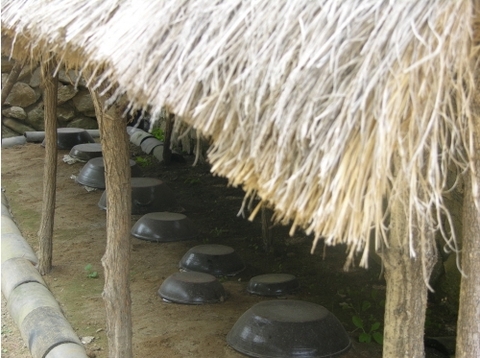
I remember when I was a kid, we spent days preparing and making kimjang kimchi so that it could last us through the winter and into spring. We first dug big holes in the ground big enough to hold our huge clay jars (so big that a child can fall in). In the meantime, we spent the day washing and brining 100+ napa cabbages and also preparing the ingredients for the stuffing. The next day we took these salted napa cabbages and inserted the stuffing in between each cabbage leaf. It was an enormous amount of work but boy…was it worth it. All winter long, we got to eat these amazingly crunchy and zingy and sometimes even ever so slightly frozen kimchi that came out of these jars in the ground. So why was it so tasty?
According to research, when it is buried in the ground, the temperature remains quite constant – at 32 – 35 F all winter long. At this temperature it takes about 20 days for the kimchi to fully ripen but it is definitely worth the wait.
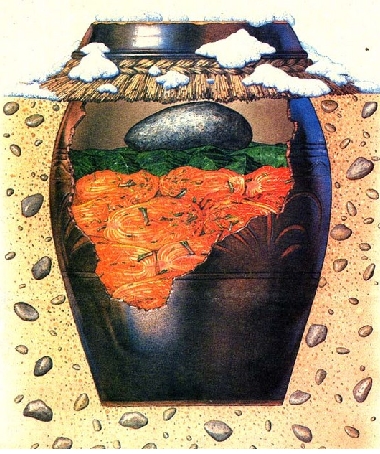
The clay jars are glazed to hold the moisture in but it can still breathe which allows just the right amount of air circulation to take away any heat produced from the fermentation (keeping the temperature stable). It also keeps the air tight enough for the bacteria to not grow too fast which helps the kimchi maintain its peak flavor for a longer period. The history of kimchi can be dated back almost 2000 years to the Goguryo Dynasty according to some historians, so you can see how long Koreans had time to refine the technique of kimchi making.
Since most Koreans now live in apartments and have no backyards to bury the jars, they have invented what is called a kimchi refrigerator. This fridge is different from the conventional refrigerator because the interior walls of the fridge are cooled instead of the air which helps to keep the interior at a more constant temperature. I own one and I have to say it is the next best thing to having your own kimchi jar in the ground. It even has temperature options for fermenting and then just storing it to prolong its freshness.
How to tell if Kimchi is ripe and ready to eat?
When a kimchi is not fully ripe, you are able to smell and kind of taste the individual ingredients – garlic, cabbage, radish, green onion, fish sauce, etc – as they have yet to fully integrate with each other. When it is fully ripened, the tastes of all the ingredients are well blended together and there is full flavor embedded in each cabbage leaf or vegetable pieces. There is also a slight sour taste with an added zing at the end. You can also no longer smell the raw ingredients individually but rather have a combined, wonderful slightly stinky smell that is unique to kimchi. Below is the chart that I promised earlier –
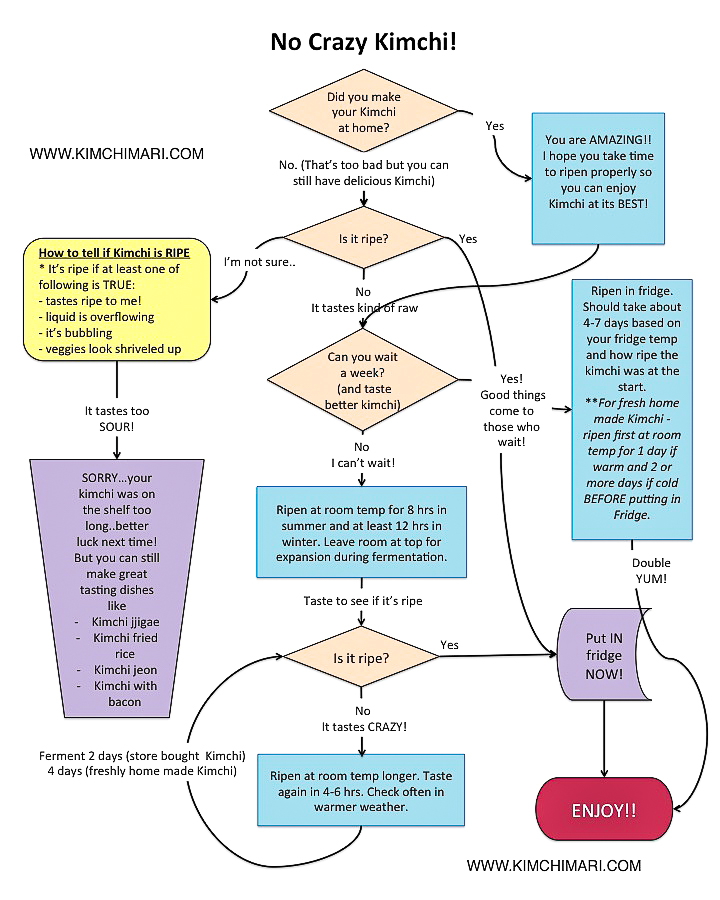
So how long can I store Kimchi in the fridge?
When stored at the ideal temperature that’s close to the freezing point of 32 F (-1 to 0℃), kimchi will keep for 3 months or more.
If the temperature of your fridge is higher (which is normally the case), it will probably keep for at least a month or more. Kimchi will start to taste just too sour when it starts to go bad – at which point, the best way to eat them is by cooking them by making Kimchi Jjigae, Budae Jjigae, Kimchi soft tofu stew, Kimchi fried rice and of course Kimchi Mari! Kimchi will sometimes go bad – it will have this whitish kind of film when it has been really too long and will also smell very pungently sour. You don’t want to eat it at this stage.
Can I take my Kimchi out from the refrigerator and leave it on the counter again to ripen further?
YES! Whether you have store-bought kimchi or made your own kimchi, you can take Kimchi out of the refrigerator at any time and let it ripen or sour further.
If it’s not ripe enough, it will take a long time to ripen in the fridge.
The whole point about my flow chart above was for people who have store-bought Kimchi. You may think it’s ready to eat because you got it from the store, but many times they are not fully ripe and therefore doesn’t taste as good.
Well, I hope this was helpful. Please share this info so that more people can learn how to ripen Kimchi properly and enjoy it at its best!
Take care,
XOXO
JinJoo
PS – if you want to learn more about Kimjang, here are two posts that teach you all about it!
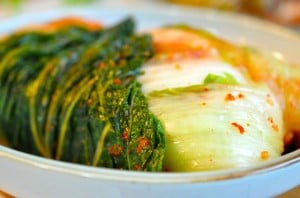 kimjang kimchi
kimjang kimchi- Kimjang Day: Part 1- How it’s done – I share my experiences and tips learned while doing Kimjang with my mother-in-law.
- Kimjang Day: Part 2 – Ingredients and Tips

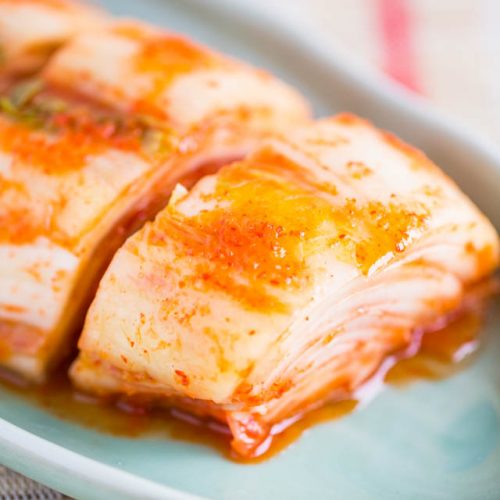
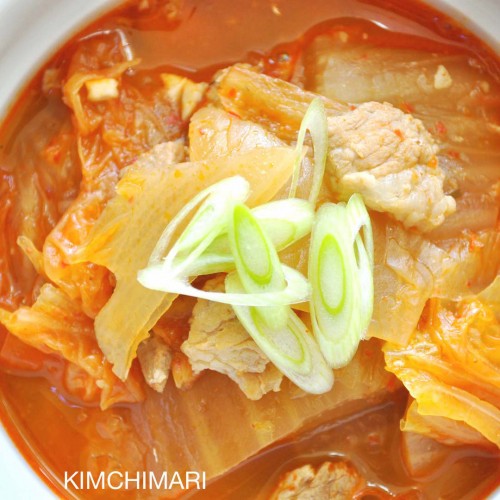
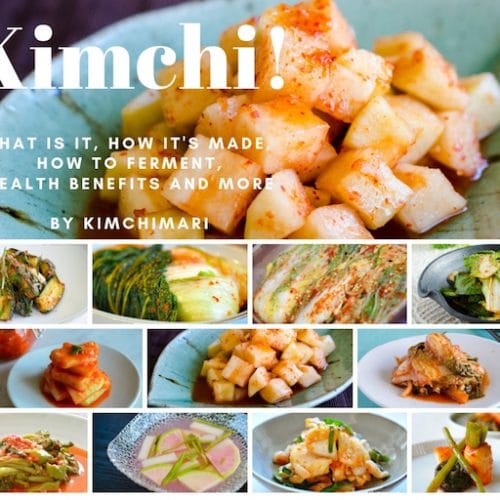
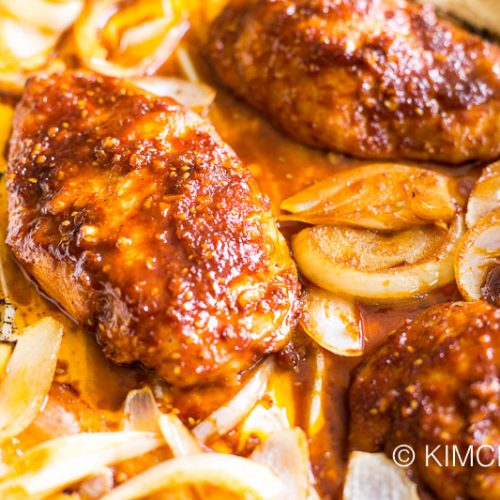
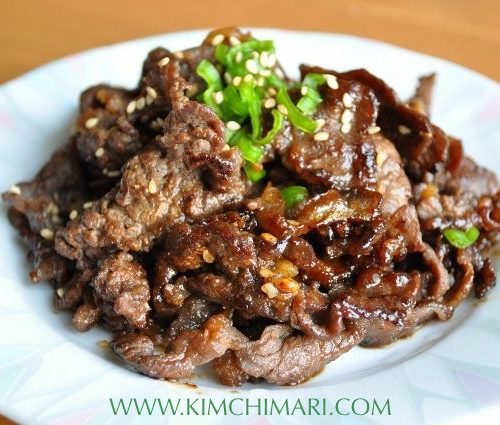
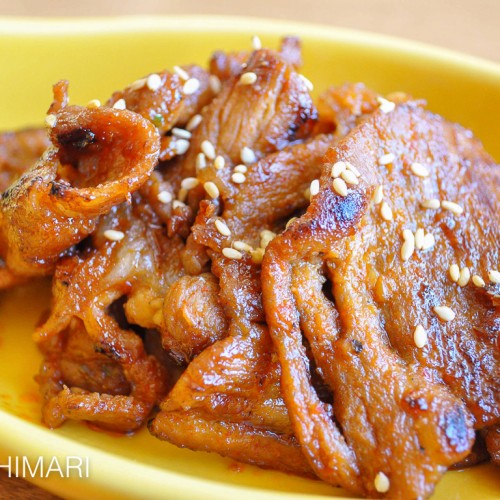

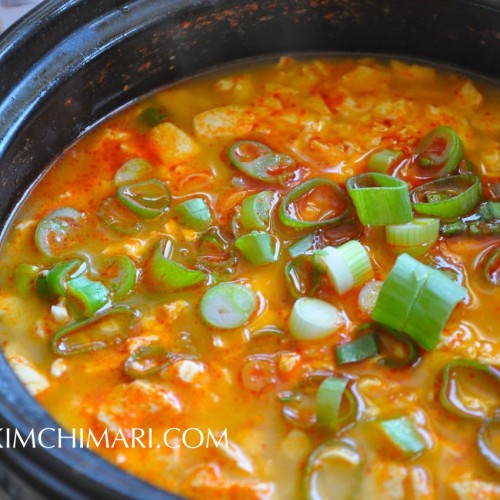
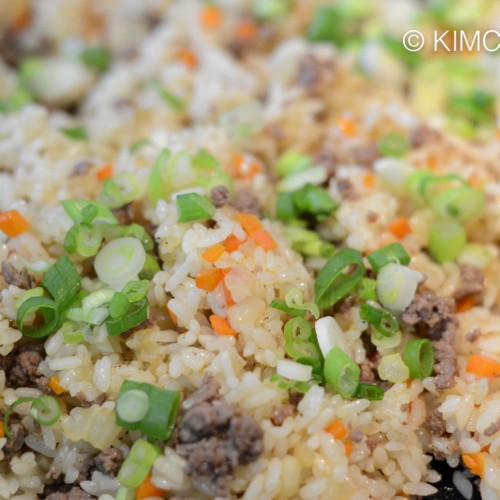
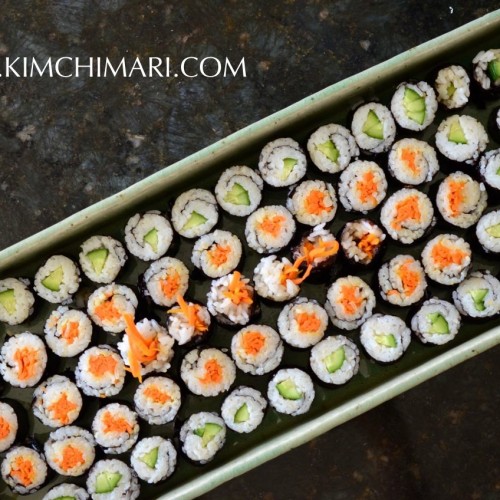









Hi, thanks for making this page. It’s very interesting and it helped me a lot.
I watch a lot of Korean movies and dramas, and I see Kimchi either being made or eaten, then I go online and people say how good Kimchi is and I want to try it too. I mean, I was so curious that I was considering going to a shop that is miles away to see if they had it 🙂
I could buy it online, but being in the UK, I could only find Kimchi with MSG in online shops, and I don’t touch that stuff.
So, I thought, right, I have to make it myself. I read a lot (and I mean a lot) about making Kimchi, and collected a lot of recipes before I finally picked one to use. I made my Kimchi just over a month ago and it was a great experience! I tried to stick to the recipe as much as I could, but could not find any shrimp paste or anything similar, so I only used anchovy sauce (bought the best one I could find).
Making it wasn’t hard and I quite enjoyed it. I didn’t really like fresh Kimchi, as all flavours were a bit too strong to my taste (but this didn’t put me off). Left it in in a room temperature for 3 days (it was rather cold), and when I tried it on day three I was amazed how the flavour changed and how nice it was! Put it in a fridge, and I was trying it every three days to see how it may change. The Kimchi in the smaller jar (about 1 liter) was great after just one week (and it didn’t last long, as I kept eating it). The one in a bigger jar (probably 2 liters), took longer to ripe and it was best after approx one month. I was hoping to use some of this Kimchi to make stew when it turns sour, but guess what – I couldn’t stop eating it either. I have very little left and will be making another batch next week. I’m addicted 😀
The only thing is I made too much of the paste (probably enough for two cabbages, and I only had one), so my Kimchi was really well covered in the paste and it turned out quite hot, which is fine as I like hot and spicy things, but probably not how it’s supposed to be? How hot should Kimchi be??? I mean mine is like really sinus clearing hot LOL. But I love it.
But now I really need to find some genuine Kimchi to try and see if my creation was at least close to the real thing.
Thanks again for this great article, and sorry for such a long post… XXX
So glad you found my blog! I’m also very happy to hear that your kimchi turned out good eventually. You did the right thing by letting it ferment for a couple days. How hot is Kimchi supposed to be? That’s a great question. It really depends on the particular area where it’s made: it gets hotter and saltier as you go further down south and gets paler and less spicy as you go up north. I think this is pretty much how things are in most countries. People generally need more salt and less fat in hotter climates and need less salt and more fat in colder climates. And then it just depends on personal taste.
But one thing to note – traditionally Korean food, not just Kimchi, is never sinus clearing hot. Only recently, has it become spicier due to people’s taste evolving to more spicier things.
I hope you can find some really good authentic Kimchi somewhere. Unfortunately, that’s usually never at restaurants. Best place is at someone’s home when you are outside of Korea. Or if you have access to a Korean market, buy Kimchi that’s imported from Korea – that’s your best bet. Good luck! Thanks for visiting!
Wow. I googled “Kimchi gets better with time in your refrigerator” and found your website.
Funnily, I bought some kimchi from a Korean market last October and my husband and I thought it was awful so it sat in the fridge until just today (April 09, 2013) when I decided to brave trying it before deciding if I should just toss it out.
OH MY HEAVENS! The flavor is NOTHING like it was when we first bought it! It’s hard to describe except to say it tastes like a zesty cheese made out of vegetables. SO YUMMY! Now that I know this, I plan on buying some more batches and letting them ripen in my fridge.
I think I just found a new addiction. =0))
Haha.. your new addiction is a good and healthy one! Remember to make Kimchi stew or Kimchi fried rice when kimchi gets too sour.
Thanks for stopping by!
Hi all,
I’m steve from singapore and it’s indeed amazing to see all your enthusiasm and passion towards korean cuisine, i have just tried traditional korean cusine recently and i would really love to try out kimchi fried rice for a start but would need to ask how to purchase and select the right kimchi and kimchi liquid.
Below is the site which i browse for making kimchi fried rice, hopefully i can get better advise here. Thanks in advance and hope to hear from you soon.
https://www.youtube.com/watch?v=5gLz4rkNxhg
Hi Steve! Sorry for the late reply. I usually respond much quicker. 🙂
I’m not sure what kind of Korean markets are available in Singapore but if you can get kimchi that’s directly imported from Korea, that’s the best.
If not, the kimchi that is locally made at the Korean store should be pretty good too.
To make kimchi fried rice, just make sure the kimchi is fully fermented (in the least) or even better, when it has turned sour. I personally don’t like adding kimchi liquid to fried rice because it can make the fried rice soggy. See my recipe at https://kimchimari.com/2011/04/01/kimchi-fried-rice/
I hope this helps – Good luck!
I dont normally add comments to blog (especially older ones) but felt the need to compliment you on your kimchi flowchart. It is witty and awesome!
I just made a jar of kimchi today and now I know how to ripen it using your flowchart. Thank you!
Thank you so much!! I love it when I hear that it was both entertaining and helpful. 🙂 Wish you all the best of luck with your kimchi and please don’t hesitate to ask if you have any questions!
Hello JinJoo, Kimchi making is such a joy as I can actually see the whole process of fermentation take place at my very own home.
My country is summer kind of weather all the time so fermentation is quite well control on the number of times i ve made.
Through my trial and error… i have improved everytime from my 2nd batch mistake by adding salt & fish sauce to the too blend kimchi…it taste raw salty-ness without the fermented taste…. whole batch ended up as cooked kimchi with other ingredients.
All the good batches that ive made turn out so well…was made possible by using all true korean red pepers and fish sauce from the Korean store , Australian sea salt , Asian brown pears…etc..
Without sweet rice flour, it turn out runny but fine. JinJoo, I might like to try out your cool- boiled porridge to replace sweet rice flour ..The above photo shows starchy was what i am looking for.
To be very safe..i dont add shrimp paste. maybe wait till im very good much later…again some ingredient dont come easy in my country.
catch up again..
Very interesting to hear how you make your kimchi. it sounds like you like your kimchi to not have a lot of liquid. Which is fine but please remember that there should be just enough liquid to cover the kimchi otherwise it won’t ripen as well and also the kimchi that’s not covered by liquid may actually spoil a little quicker. Shrimp paste is not a must but some kind of fermented fish/seafood needs to be added. thanks for your comment!
Hi JinJoo,
My kimchi making is runny mainly from the white raddish and grated asian pear juice …i believed.(i like to try your ‘match stick’ cut pears too )
The juices come in large volume as i did not add sweet rice flour or your mentioned porridge starch in so it was always well covered with these lovely liquid and the left over juices make good stews.
Your pointer on kimchi well cover in its liquid is very helpful to me as it is a important rule for kimchi fermentation.
JinJoo, if i add seafood
Hi JinJoo,
My kimchi making is runny mainly from the white raddish and grated asian pear juice …i believed.(i like to try your ‘match stick’ cut pears too )
The juices come in large volume as i did not add sweet rice flour or your mentioned porridge starch in so it was always well covered with these lovely liquid and the left over juices make good stews.
Your pointer on kimchi well cover in its liquid is very helpful to me as it is a important rule for kimchi fermentation.
JinJoo, if i were to add seafood…i am so worry the raw shrimp fermentation process might spoil my batch of kimchi if i am not well verse in this process…maybe i should read more on this before i go for seafood batch for my next kimchi making..
Thanks for your pointers..